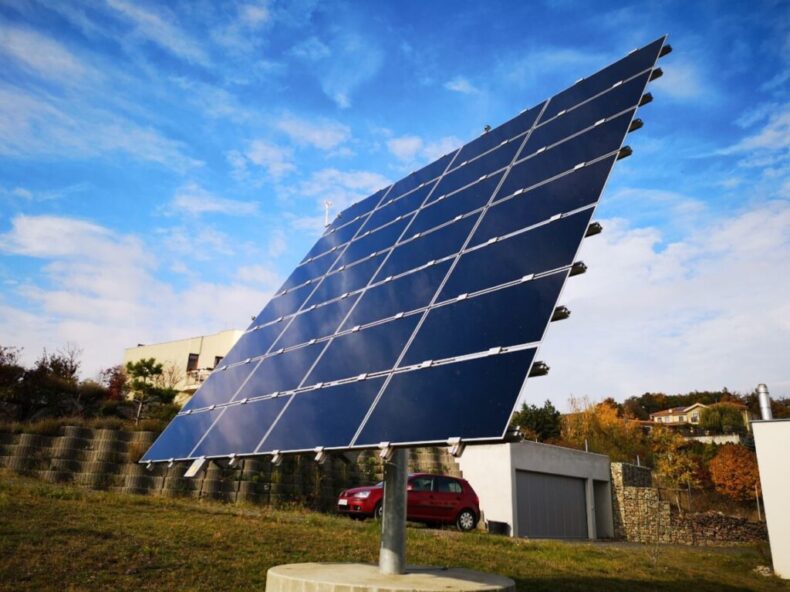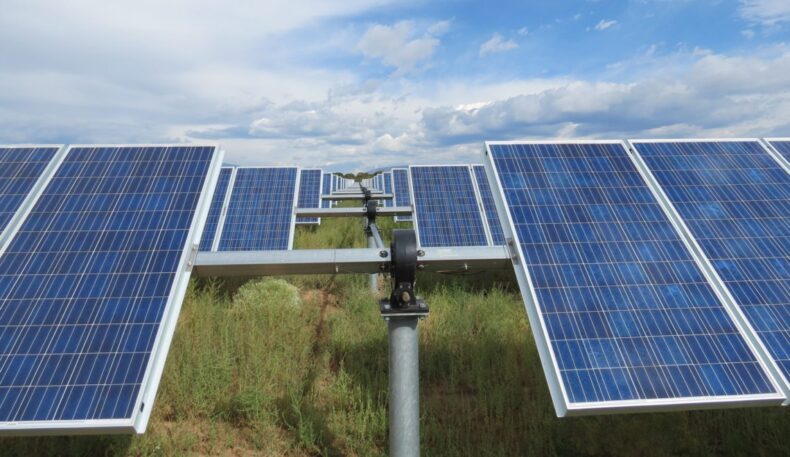Nowadays, electricity discussions usually revolve around green and renewable sources. When it comes to that, solar energy always comes first. However, one reason some people are yet to leverage the option is inadequate sunlight to generate sufficient power. You can solve such a problem by adjusting solar panels to follow the sun.
It’s not news that the sun changes position in the sky as the hours go by. Hence, you can adjust solar panels for maximum power output by following the sun’s point at all times. This is otherwise known as solar tracking.
Contents
What is Solar Tracking?

In simple words, solar tracking means following the position of the sun. With a tracking system, your solar panels will adjust to directly face the sun throughout the day. This ensures they receive maximum sunlight so long as it’s daytime, and consequently, it means high power output.
A solar tracking system requires automation. Otherwise, you’ll have to manually rotate the panels as the sun moves from one point to another. Besides the fact that it’s strenuous work, adjusting by hand may lack accuracy. Identifying the perfect solar angle to orient your panels will require some calculations, factoring in your longitude, latitude, and date. Consider doing this for every moment the sun shifts, and you’ll understand why it’s impossible to achieve accuracy manually.
Therefore, when installing a tracking system to optimize your solar panels, you’ll need sensors, motors, and controllers. One way to achieve that is using a linear actuator — particularly industrial actuators with positional feedback. These devices create linear motion using an electric motor and are super easy to work with.
Linear Actuators in Solar Panel Tracking System

Linear actuators help in creating straight-line motion. You can install them to your solar panel tracking system for precise and efficient automation. The devices will lift your solar panels smoothly, following the sun’s direction. Check the video on this page to see how it works.
The end game is for the linear actuators to adjust the solar panel angles according to the sun’s position. However, there are particular reasons why we recommend using them over other mechanism systems. Mainly, they can work with any solar tracking type, including single and dual-axis systems.
Actuators in single-axis tracking system
Here, the work of the actuator is to adjust the solar panels horizontally or vertically. That means the device will follow the sun’s east to west, which is the norm. With such a setup, you can boost power output by up to 25%, and you need just one linear actuator.
Actuators in dual-axis tracking system
Dual-axis solar tracking systems adjust the panels horizontally and vertically. In other words, they follow the sun’s direction, east and west and north and south. You’ll need two linear actuators to set up a dual-axis tracking system. It demands more during installation than the former, but it’s worthwhile as you increase output by up to 40%.
Installing linear actuators in a solar panel tracking system
As stated, linear actuators are easy to work with. So the installation process is straightforward. First of all, you need to get all the necessary components. You’ll need the motion devices, sensors, a controller, solar panels, mounting brackets, and frame.
Getting the suitable actuator device
It’s crucial that you purchase quality linear actuators to get the best out of your project. Consider your frame — the structure that’ll hold the entire setup. Usually, solar panel frames are made of steel. Then, the solar panels are also relatively heavy, so factor in how many you’ll use in the setup. Generally, you’ll need industrial heavy-duty actuators for such a weight-demanding project.
Still, you have to consider other factors like stroke length, force, and voltage. The last two are critical since the function of the entire setup revolves around generating electricity. You don’t want anything interfering with the performance of the motion devices or the solar panels.
Completing the setup
You’ll first attach the linear actuator to the frame, which should already have the solar panels installed. Ensure you use sturdy mounting brackets for the job. Also, set the linear actuator at a position that offers balance as the panels lift. The middle is workable here, but if it’s a large setup, you need to place two more actuators at the two ends. Next, wire the motion devices to a power source and its controller. For the latter, an Arduino microcontroller will work for full automation.
After wiring, test to confirm that the controller works perfectly. Then, install the sensors to track the sun’s position. If you’re using linear actuators with feedback as advised, you get built-in sensors, which is more straightforward. Program the controller and sensors to your preferred settings. This involves speed, direction, and stroke limits, among others. Finally, test the complete setup to confirm it works. Correct irregularities, if any.
Advantages of the Solar Tracking Follow The Sun System
Using a solar tracking system has several benefits. As stated previously, the primary advantage is to boost power output. You can increase the energy generated by the solar panels by up to 40% if they adjust their angle according to the sun’s position.
Consequently, the setup can help you save costs. You’ll use fewer panels in your solar tracking to generate the same amount of electricity compared to a fixed setup. By extension, you also save space when you employ fewer panels. Finally, a solar tracking system adds aesthetics. You can’t argue that seeing your panels adjust automatically as the sun shifts is an interesting sight.
Conclusion
Install adjustable solar panels for better power output at home. The setup is straightforward, as the panels follow the sun’s direction and always receive maximum sunlight. It’s an advantageous project, yet simple to actualize, if you use a linear actuator.